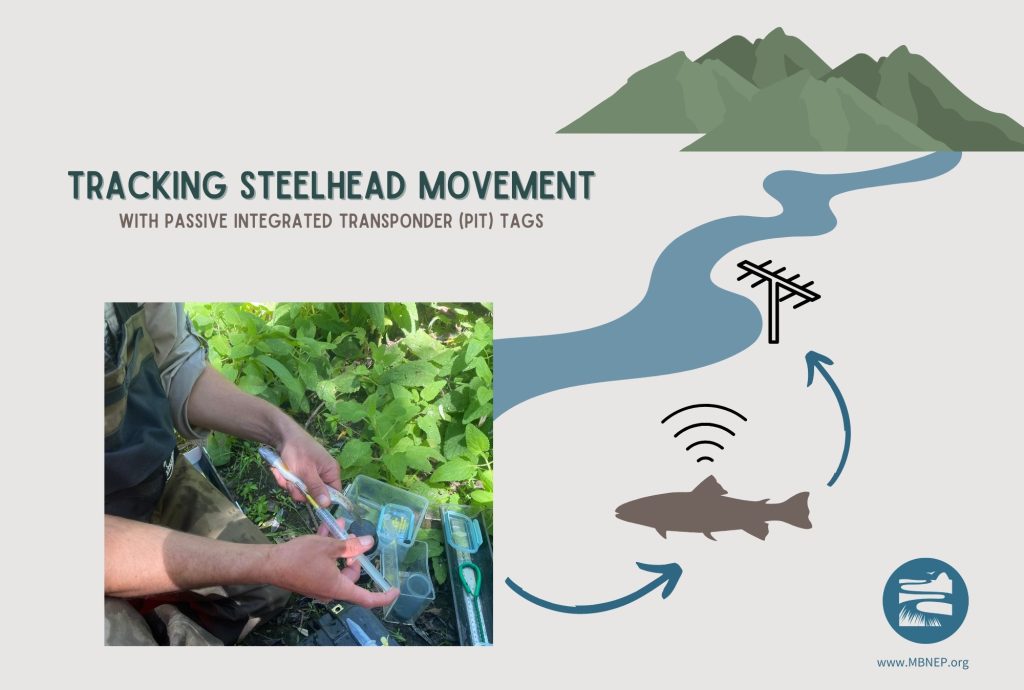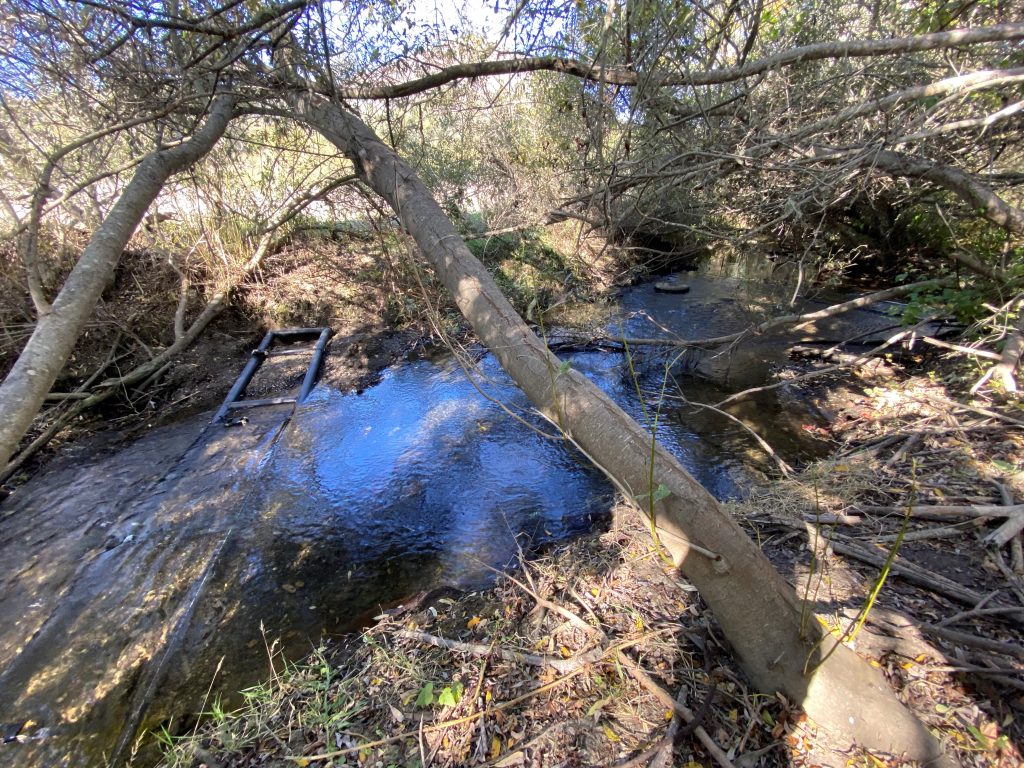Photo courtesy of Matt McKechnie.
The Morro Bay estuary and the lands that surround it host a rich diversity of wildlife. One of the species that we are fortunate to support is steelhead, which are the ocean-going form of rainbow trout (Oncorhynchus mykiss). Their unique life cycle has long captivated the imagination of scientists and wildlife enthusiasts alike. Steelhead are born in freshwater streams like Chorro Creek and migrate out to the ocean before eventually returning to a freshwater creek to reproduce. Some O. mykiss spend their entire lives in freshwater. Known as rainbow trout, their offspring may become ocean-going steelhead since they share the same genetic code.
The Estuary Program is studying how steelhead use Chorro Creek including their growth rates and migration timing. The study focuses on tracking steelhead in Chorro Creek, which is a primary tributary to the Morro Bay estuary.
Fish on the Move
Chorro Creek acts as both critical habitat and a migratory corridor for steelhead to reach the estuary. While this area is known to be important for migration, little is known about when exactly fish are on the move.

To better understand fish movement in the watershed, the Estuary Program worked with Stillwater Sciences to tag over 300 O. mykiss using Passive Integrated Transponder (PIT) tags. Each tag contains a unique number that identifies an individual fish. This allows us to track information like when and where it was captured and its size.
After fish are tagged and returned to the creek, we track their movements using an antenna that is installed directly in the creek. The antenna works like a scanner for the PIT tags, so if a tagged fish swims near the antenna, their identification number is recorded. This allows us to see both when and where the fish are moving.
Migration to the Ocean
The Estuary Program currently has two PIT tag antennas installed in Chorro Creek. One is near where Chorro Creek drains into the estuary, and one is slightly upstream near the Chorro Flats area. When we detect fish on the antenna closer to the estuary, we can assume that the fish are migrating out to the ocean.

Since the antennae were installed in late 2023, we’ve detected 84 unique fish via their PIT tags. While generally we assume that all fish detected at the lower antenna are migrating out to the ocean, a few fish have been detected moving downstream and then back upstream again. This could indicate some fish are venturing out to the estuary for short periods of time before returning to the creek. The sizes of the ocean-bound juvenile steelhead ranged from four to nine inches. Research has shown that larger juveniles may move directly into the ocean, while smaller ones might remain in the estuary through the summer. This additional time in the estuary can allow smaller fish to nearly double in size, giving them a huge advantage when they finally migrate out to sea.
Steelhead may spend between several months to over a year in the ocean before migrating back to spawn, but their exact return time is unknown. We look forward to continuing this research to assess when our tagged steelhead return to Chorro Creek!
Next Steps
The Estuary Program will be conducting our first recapture effort in May 2024. We aim to recapture any previously tagged fish so that we can assess how much they’ve grown since they were first tagged. Any steelhead captured during this effort will be scanned for existing tags, weighed, and then measured. Those without tags will be tagged for our next recapture effort.
We are very excited to see how growth rates vary throughout the watershed and look forward to sharing that information soon!
Two Estuary Program volunteers recently observed a resident rainbow trout spawning ground on Pennington Creek. This tributary to Chorro Creek has great water quality and habitat for sensitive aquatic species. Video courtesy of Neil Sistek.
Help us protect and restore the Morro Bay estuary!
- Donate to the Estuary Program today and support our work in the field, the lab, and beyond.
The Estuary Program is a 501(c)3 nonprofit. We depend on funding from grants and generous donors to continue our work. - Support us by purchasing estuary-themed gear from ESTERO. This locally owned and operated company donates 20% of proceeds from its Estuary clothing line and 100% of Estuary decal proceeds to the Estuary Program. Thank you, ESTERO!
- Purchase items from the Estuary Program’s store on Zazzle. Zazzle prints and ships your items, and the Estuary Program receives 10% of the proceeds.
- Subscribe to our seasonal newsletter: Between the Tides!
- We want to hear from you! Please take a few minutes to fill out this short survey about what type of events you’d like to see from the Estuary Program. We appreciate your input!